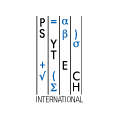


| Standardisation |
| Reliability |
| Criterion Validity |
| Construct Validities |
| 16PF & MBTI |
| OPQ & JTI |
| EPQR & Klines PPQ |
| NEO & Gordons |
| OIP & OPP |
| FIRO B |
| Scales |
| Acrobat Files |
| Right click and select 'save target as' to save to your computer |
| A sample report |
| 15FQ+ manual |
The fifteen dimensions measured by the 15FQ™ are bipolar. That is to say high or low scores on each dimension measure opposite personality characteristics (e.g.retiring versus outgoing, accommodating versus assertive etc.) as presented in the following table:
| Low Score Description | High Score Description |
| Reserved cool, aloof, distant | Outgoing, gregarious, warm, participating |
| Temperamental, emotional, moody | Calm-stable, mature, resilient, unruffled |
| Accommodating empathic, mild, modest | Assertive forceful, confrontational |
| Cautious deliberating, sober, serious | Enthusiastic lively, impulsive, animated |
| Expedient flexible, tolerant, spontaneous | Conscientious rule-bound, meticulous |
| Retiring timid, shy, restrained | Socially Bold attention-seeking, confident |
| Factual, Realistic hard-headed, unmoved | Intuitive, aesthetic, tender-minded |
| Trusting easy-going, accepting, tolerant | Suspicious cynical, questioning, wary |
| Practical pragmatic, down-to-earth | Conceptual imaginative, abstract |
| Direct forthright, uncalculating, frank | Restrained inhibited, guarded, diplomatic |
| Confident self-assured, complacent | Self-doubting apprehensive, insecure |
| Conventional conservative, traditional | Radical innovative, liberal-minded |
| Group Orientated dependent, affiliative | Self-sufficient self-reliant, solitary |
| Informal undisciplined, unconventional | Disciplined self-controlled, rigid |
| Relaxed composed, placid | Tense-driven impatient, irritable |
Second-order Factors: Using the statistical procedure of Factor Analysis, a further five broad underlying characteristics can be derived from the 15FQ™.
15FQ™ 2nd Order Factors
| Low Score Description | High Score Description |
| Introversion | Extroversion |
| Low Anxiety | High Anxious |
| Creative | Tough Minded |
| Agreeable | Independent |
| Low Control | High Control |
Measurement Issues:Raw scores on the 15FQ™ scales are converted into a ten point standardised scale based on the distribution of scores of the reference ‘norm’ group. The sten scale has a mean of 5.5 and a standard deviation of 2. Scores within the range of 4-7 on the sten scale (middle 68%)are considered to be typical of the reference group, while sten scores of 1-3 and 8-10 (lower or higher 16%)can be treated as high or low as below.
Percentages of People obtaining scores within sten score range
| Sten range | Proportion of people obtaining scores in this range |
| 5,6 | 38% |
| 4,5,6,7 | 68% |
| 1-3 & 8-10 | 16% |
| 1,2 & 9,10 | 7% |
| 1&10 | 2% |
Given the lack of perfect measurement accuracy of the 15FQ™ dimensions, scores obtained for a given respondent should be treated as an estimate of their ‘true’ score,if there were perfect measurement of the characteristic being assessed. As a convention a confidence interval (Standard Error of measurement) is applied to the score obtained for a respondent. This confidence interval is related to the reliability of the scale, which for 15FQ™ would amount to just under one sten point. Given that, we would expect a person’s score to be within a range of just under one sten point 68 percent of the time or we can be at least 68% certain that if repeatedly tested, the respondent’s score will be within a range of plus or minus one sten point.
| Psytech International The Grange Pulloxhill Bedfordshire MK45 5HE |
| tel. 01525 720003 fax. 01525 720004 |